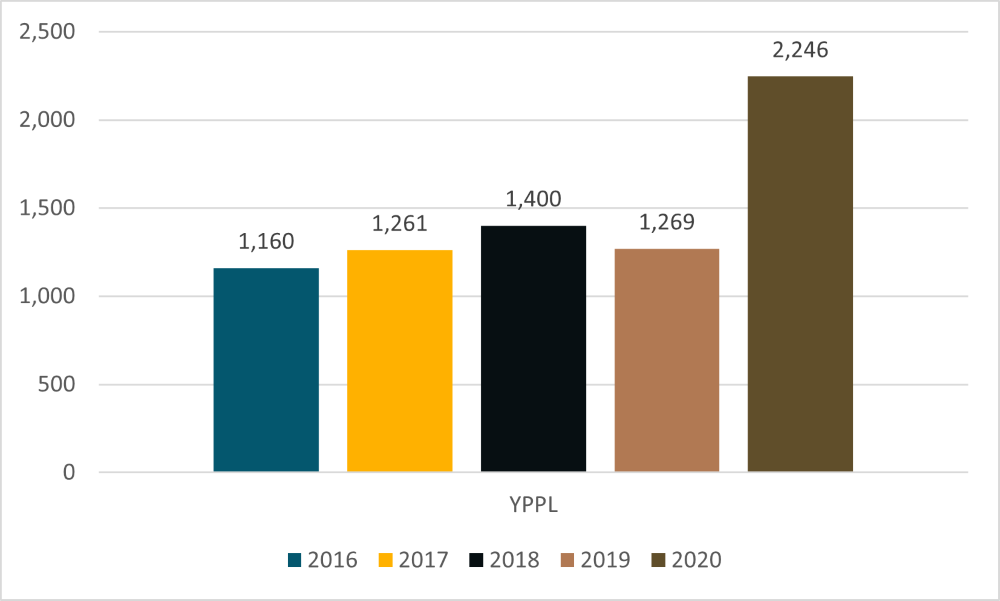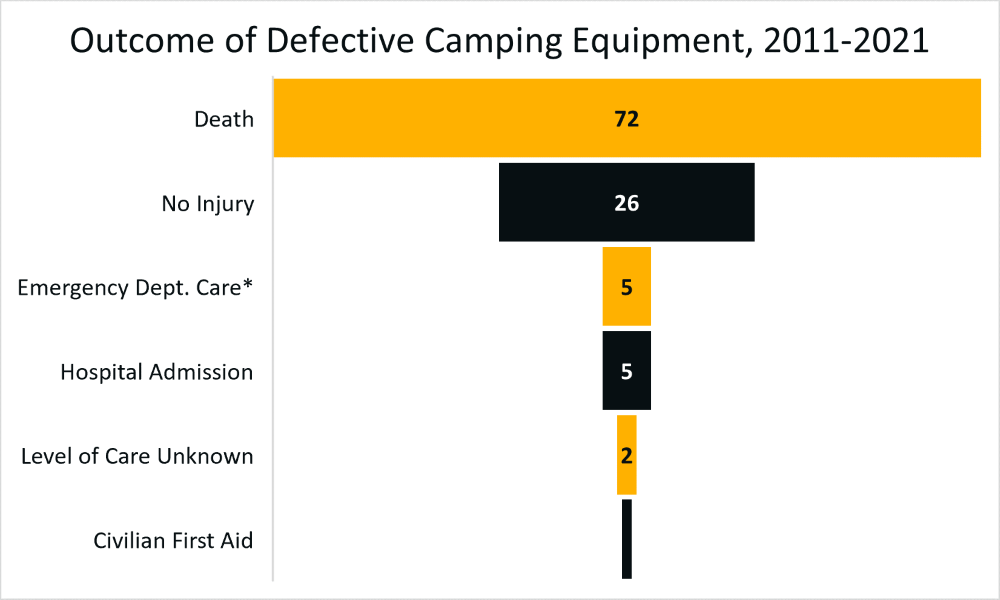Northern California is home to some of the most iconic and treasured National Parks in the United States. Even people who are not incredibly familiar with the country’s national park system likely recognize names like Yosemite, Redwood, and Pinnacles. With so many beautiful and preserved natural habitats within striking distance, it’s no wonder that residents of Fresno and the neighboring communities enjoy hiking, camping, and other outdoor activities.
Despite the natural splendor of the outdoors, however, it’s possible for people to suffer serious or even life-threatening injuries. Defective camping equipment, wild animal attacks, and dangerous natural terrain can inflict serious or even lethal injuries on an unprepared hiker or camper. In this article, we discuss the impact of nature-inflicted and environmental injuries in California.
According to National Health Care Provider Solutions (NHCPS), environmental injuries occur when a victim is exposed to something dangerous in their immediate area. Some of the potential causes of environmental injuries can be:
Depending on the type of injury and the victim’s proximity to medical care facilities, an environmental injury can cause minor, moderate, or life-threatening harm.
Compared to other forms of death in California during the year 2020, such as falls, firearm homicides, and drug poisonings, nature-related and environmental fatalities made up a low percentage of statewide deaths. Only 0.77% of fatalities in the state occurred due to an environmental injury, of which all 150 incidents were unintentional. However, the cost in human life is steep indeed.
Although it is incredibly difficult to put a number on the worth of a human life, we calculated the value of statistical life (VSL) for each mechanism and injury intent. VSL measures the tradeoff rate between money and fatality risk, thus indicating the costs to improve public safety and a population’s willingness to take up such costs. The VSL value for environmental deaths in 2020 is $1.41 billion dollars, revealing that it would take an estimated $940,000,000 to prevent a single random environmental death in California.
| Mechanism | Intent | # Deaths | Medical Costs | Value of Statistical Life | Combined Costs |
|---|---|---|---|---|---|
| Cut / Pierce | Unintentional | – | $69,536 | $73.80M | $73.87M |
| Homicide | 322 | $2.15M | $3.51B | $3.52B | |
| Suicide | 135 | $773,009 | $1.39B | $1.39B | |
| Undetermined | – | $25,261 | $47.90M | $47.93M | |
| Drowning (Includes Water Transport) | Unintentional | 437 | $4.41M | $4.80B | $4.81B |
| Homicide | – | $15,082 | $40.80M | $40.82M | |
| Suicide | 71 | $177,520 | $754.00M | $754.18M | |
| Undetermined | 20 | $43,312 | $202.30M | $202.34M | |
| Fall | Unintentional | 2,896 | $93.69M | $13.28B | $13.37B |
| Homicide | – | $8,978 | $22.80M | $22.81M | |
| Suicide | 188 | $1.07M | $2.00B | $2.00B | |
| Undetermined | – | $206,117 | $73.60M | $73.81M | |
| Flame or Fire | Unintentional | 200 | $2.54M | $1.67B | $1.67B |
| Homicide | – | $26,530 | $74.90M | $74.93M | |
| Suicide | 18 | $475,744 | $184.50M | $184.98M | |
| Undetermined | – | $49,252 | $36.50M | $36.55M | |
| Hot Object / Substance | Unintentional | 10 | $336,467 | $57.20M | $57.54M |
| Firearm | Unintentional | 39 | $649,114 | $467.20M | $467.85M |
| Homicide | 1,732 | $14.16M | $20.15B | $20.17B | |
| Legal Intervention | 99 | $778,315 | $1.12B | $1.12B | |
| Suicide | 1,552 | $6.17M | $14.26B | $14.27B | |
| Undetermined | 27 | $334,351 | $306.40M | $306.73M | |
| Machinery | Unintentional | 34 | $250,426 | $334.80M | $335.05M |
| Natural / Environmental | Unintentional | 150 | $2.75M | $1.41B | $1.41B |
| Drug Poisoning | Unintentional | 8,401 | $52.99M | $93.31B | $93.36B |
| Homicide | 10 | $65,500 | $115.90M | $115.97M | |
| Suicide | 412 | $3.96M | $4.24B | $4.24B | |
| Undetermined | 85 | $773,396 | $954.10M | $954.87M | |
| Non-Drug Poisoning | Unintentional | 486 | $3.82M | $5.28B | $5.29B |
| Homicide | – | $88.50 | $22.80M | $22.89M | |
| Suicide | 125 | $681,577 | $1.23B | $1.23B | |
| Undetermined | – | $14,918 | $84.80M | $84.81M | |
| Struck By / Against | Unintentional | 65 | $974,488 | $636.10M | $637.07M |
| Homicide | 50 | $1.17M | $539.40M | $540.57M | |
| Undetermined | – | $111,020 | $22.80M | $22.91M | |
| Suffocation | Unintentional | 390 | $9.50M | $3.32B | $3.33B |
| Homicide | 49 | $248,343 | $547.20M | $547.45M | |
| Suicide | 1,456 | $8.30M | $16.07B | $16.08B | |
| Undetermined | 12 | $120,063 | $160.05M | $160.62M | |
| Transport-Related | Homicide | 13 | $104,060 | $154.80M | $154.90M |
| Suicide | 30 | $44,049 | $316.50M | $316.54M |
Even a non-fatal injury can inflict thousands of dollars in medical expenses, lost work time, and a decreased quality of life. Using data gathered from the Centers for Disease Control and Prevention (CDC) WISQARS™ Reporting System, we analyzed the impact of nonfatal environmental injuries on Californians in 2020. WISQARS allows members of the general public, researchers, and government officials to measure overall health and mortality trends over time. You can review our results in the table below; please note that, in the dataset, “M” stands for “million” and “B” stands for “billion.”
Notable findings:
| Mechanism | Intent | Hospitalizations | Medical Costs | Work Loss Costs | Quality of Life Costs |
|---|---|---|---|---|---|
| Bite: Dog | Unintentional | 12,847 | $683.01M | $118.85M | $503.74M |
| Bite: Other (or Stings) | Unintentional | 22,944 | $1.22B | $212.26M | $1.16B |
| Cut / Pierce | Unintentional | 43,212 | $2.74B | $399.76M | $1.97B |
| Assault – Other | 32,302 | $2.83B | $298.83M | $1.98B | |
| Self-Harm | 85,822 | $3.33B | $793.96M | $2.11B | |
| Submersion / Drowning | Unintentional | 2,968 | $96.73M | $27.46M | $1.32B |
| Fall | Unintentional | 1.43M | $75.57B | $10.81B | $287.70B |
| Assault – Other | 1,580 | $83.55M | $11.95M | $319.84M | |
| Self-Harm | 4,462 | $235.89M | $33.74M | $583.77M | |
| Fire / Burn | Unintentional | 36,691 | $2.51B | $339.43M | $2.94B |
| Self-Harm | 1,838 | $130.67M | $17.01M | $164.23M | |
| Foreign Body | Unintentional | 41,824 | $2.26B | $386.92M | $987.07M |
| Firearm | Unintentional | 12,449 | $1.01B | $115.17M | $1.16B |
| Suffocation / Inhalation | Unintentional | 11,106 | $580.32M | $102.74M | $410.21M |
| Self-Harm | 4,623 | $241.56M | $42.77M | $1.73B | |
| Machinery | Unintentional | 12,835 | $653.86M | $118.74M | $1.47B |
| Overexertion | Unintentional | 36,413 | $2.11B | $336.87M | $4.30B |
| Poisoning | Unintentional | 393,005 | $12.27B | $3.64B | $3.93B |
| Self-Harm | 177,874 | $4.52B | $1.65B | $1.39B | |
| Struck By / Against | Unintentional | 94,206 | $5.06B | $871.52M | $13.63B |
| Assault – Other | 83,069 | $371.66M | $768.49M | $16.15B | |
| Assault – Sexual | 6,097 | $142.30M | $56.41M | $389.41M | |
| Legal Intervention | 2,538 | $618.17M | $23.48M | $367.61M | |
| Self-Harm | 11,024 | $17.47B | $101.98M | $1.14B |
All things considered, you face a substantially higher risk of needing emergency care after a fall, striking something, being accidentally poisoned, or being bitten by an animal than after experiencing an environmental injury. In fact, unintentional falls caused the most emergency room visits of all injury types across all age ranges in the U.S. throughout 2020. However, a substantial number of environmental injuries necessitating an emergency room visit did occur throughout the year.
“Unintentional natural / environment” injuries were the 18th-leading cause of emergency room visits for injury victims aged 25-34, 35-44, 45-54, and 55-64, per WISQARS. They were the 19th-leading cause of emergency room visits for patients aged 10-14, 15-24, and 65+.
Years of potential life lost (or YPPL), is an estimate of the average years someone would have lived had they not passed away prematurely. Using WISQARS data from 2016-2020 (the latest year for which statistics are available), we graphed YPPL caused by environmental injuries in California over the five-year period. To prevent the data from being skewed by the age spectrum, we used “YPPL before the age of 65.” From 2019 to 2020, YPPL caused by environmental injuries increased by nearly 57% in the state.

Although not a major national cause of injury or death, defective camping products and supplies do play a role in environmental incidents. From 2011-2021, there were 72 deaths connected to defective camping equipment across the U.S. Many of these incidents occurred due to defective camping stoves that either poisoned their users, exploded, or otherwise started a fire. Other deaths occurred due to falling equipment, collapsing tents, and entanglement. A Fresno defective machinery attorney can help you explore your legal options if you’ve been harmed by a malfunctioning or dangerous piece of equipment.

An environmental injury of any severity can be a stressful experience. If you or a loved one are injured, try to stay calm and call 911 for emergency assistance. If you are trained and licensed in first aid and have the equipment to help the injury victim(s) without putting yourself in danger, do so. After the incident, a personal injury attorney in Fresno can review your case and help determine whether the situation was caused or worsened by negligence.